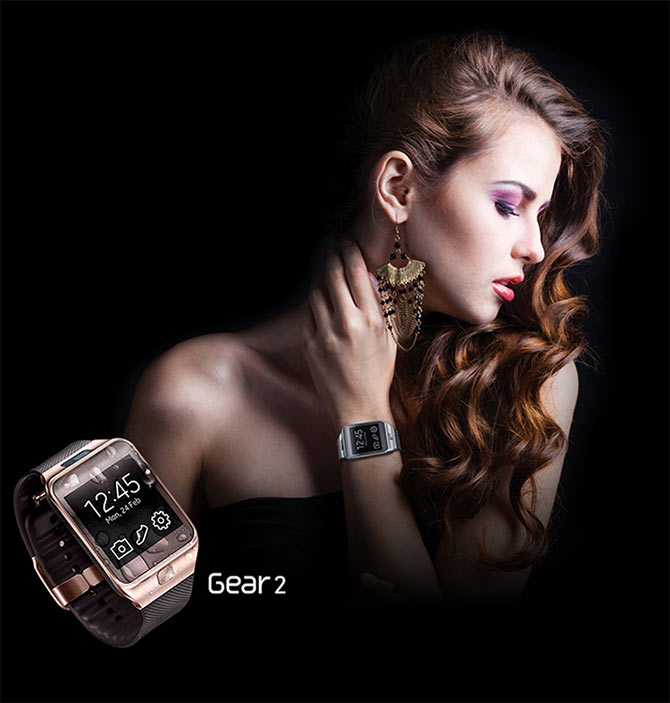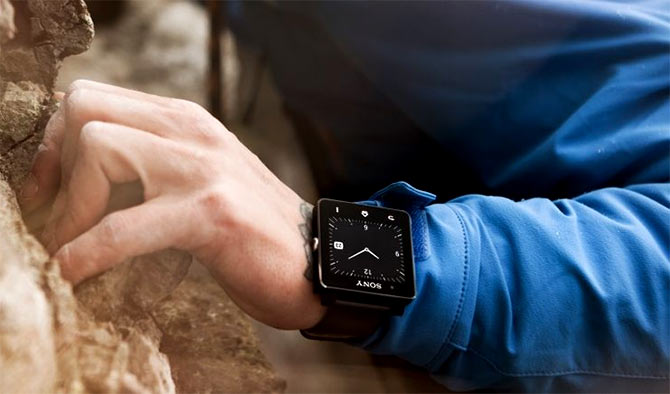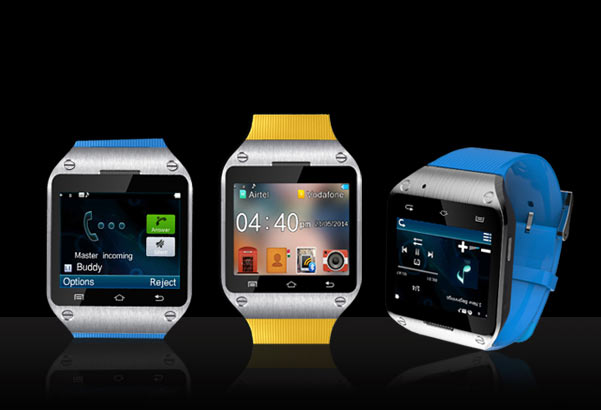 | « Back to article | Print this article |
The future is coming
The Smart Watch revolution is happening in India as you read this, and wearable gadgets will soon become as big as smartphones.
There was a time when futuristic 'smart watches' and wearable gadgets referred to Dick Tracy's wristband communicator and James Bond's Rolex equipped with a laser cutter.
Regardless, the vision soon went beyond communicating via our wrist watches.
Smartphones slowly became more popular and the demand for futuristic wearable gadgets fell by the wayside even as companies looked at smaller and sleeker portable computers.
The recent spate of smart watches has changed that notion though.
When Samsung launched the Galaxy Note 3, it included the Galaxy Gear. This compact smart watch incorporated an AMOLED screen that synced with one's smartphone to allow call answering, viewing notifications, responding to messages and even accessing a miniature range of apps for standalone use.
If smartphones were slowly becoming the alternative to full-fledged laptops and desktops in terms of productivity and entertainment, smart watches were seemingly the alternative to those quick glances and peeks at one's mobile.
Please click NEXT to continue reading
The revolution begins
Soon, other companies like Sony and Pebble released smart watches, further catering to users on iOS as well as Android.
Samsung took a rather odd route with its Galaxy Gear series, venturing from Android to Tizen and building custom apps for the same. Sony went a similar route with its SmartWatch 2 while still allowing one to view Twitter, Facebook and still respond to messages in the mean time.
The Sony SmartWatch 2 also allowed for a significant degree of dust, water and scratch resistance tanks to its IP57 certified protection.
It supports Bluetooth and can pair with other devices easily through NFC.
Unlike Samsung's Galaxy Gear, the Sony SmartWatch 2 can pair with any Android 4.0 Ice Cream Sandwich device. The SmartWatch 2 and Pebble Smart both exemplify the essentiality of style with smart watches, sporting silicone wristbands and matte coated exteriors.
While both devices started out rather slow, they soon featured a range of different apps for use. Pebble currently has more than 1000 apps available on its app store.
Please click NEXT to continue reading
India's chance
Despite all the advances and features that smart watches boast, the industry is still at a very nascent stage. Thus, it shouldn't surprise anyone that various Indian companies are looking to introduce their own range of smart watches.
Take the Spice Smart Pulse, for example, which has a plastic build and streaked metal exterior surrounding the display. It features a 1.6 inch, 320x240 resolution screen while running Java OS that can pair with apparently any Android device out there (and some Windows devices too).
The Spice Smart Pulse features many of the typical features of a smart watch such as Bluetooth functionality and even a VGA camera that can snap pictures. It's capable of lasting a solid day and you can use it for the usual range of smartphone applications like making calls, answering messages checking notifications and much more.
Though it's a far cry from the Pebble's ability to last several days, the Spice Smart Pulse is a significant step forward for the Indian smartphone industry which has grown leaps and bounds in the past two years.
Please click NEXT to continue reading
The future is coming
Google's recently revealed plans for Android L to provide the latest updates to local manufacturers right away rather than waiting months for the same. It also introduced Android Wear, its own range of wearable gadgets with a specially customised Android interface for smart watches. It won't be long before budget manufacturers look at Android Wear for Indian smart watches as well.
Microsoft is also looking to enter the smart watch market in the coming months and Apple has already begun significant advancements in the same area with iOS 8 featuring HealthKit and integration with existing wearable gadgets.
The digital fitness revolution, in which smart watches are being increasingly used for exercise and maintaining one's health and activity, is only just getting started. There are still many avenues for Indian devices to explore aside from simply syncing to one's smartphone.
If smart phones offer avenues for communication with one's fellow man, then smart watches allow us to take those interactions and further simplify them.
Even those with smart phones in India can utilise the limited functionality that smart watches provide and place calls, message and access apps. The end goal is to offer a budget solution that can compete with traditional watches -- which is a ways off -- and if this succeeds in India, it could mark a significant step forward for widespread technology acceptance.




